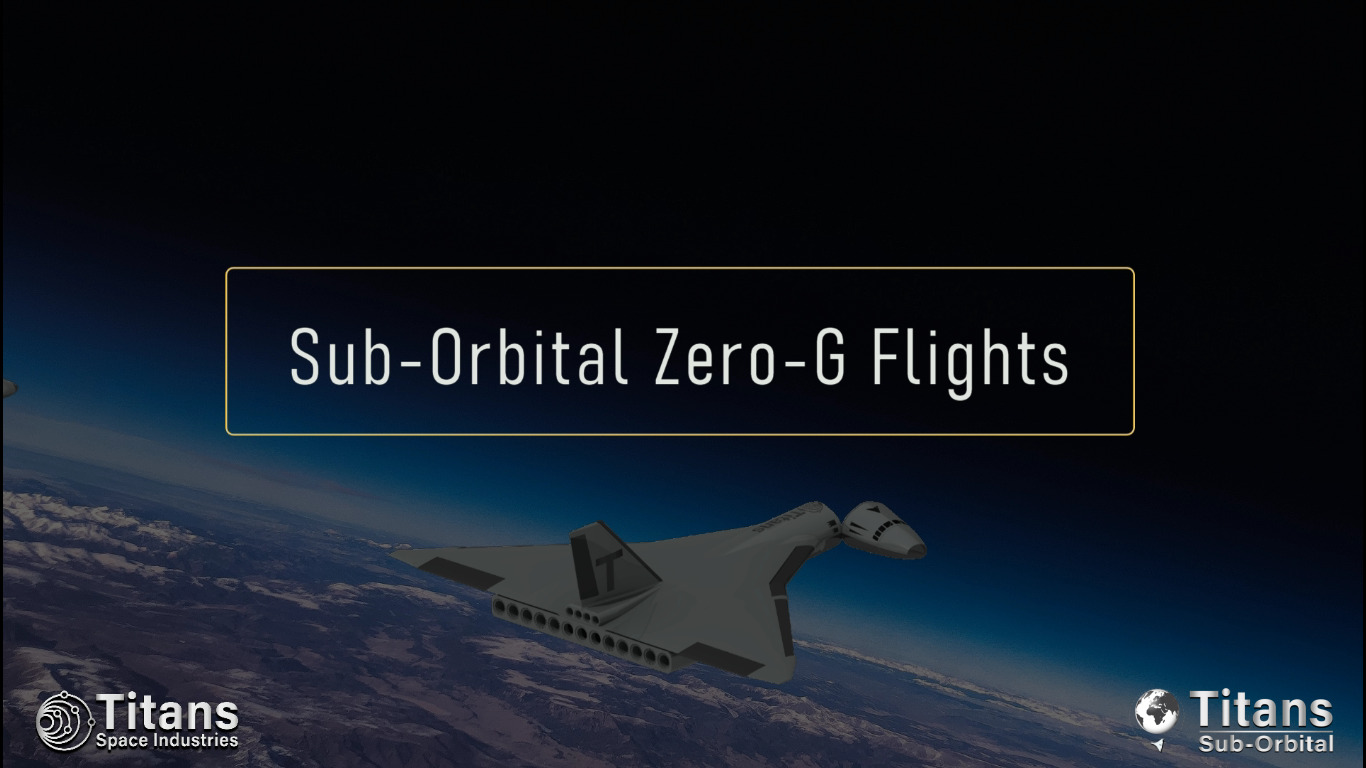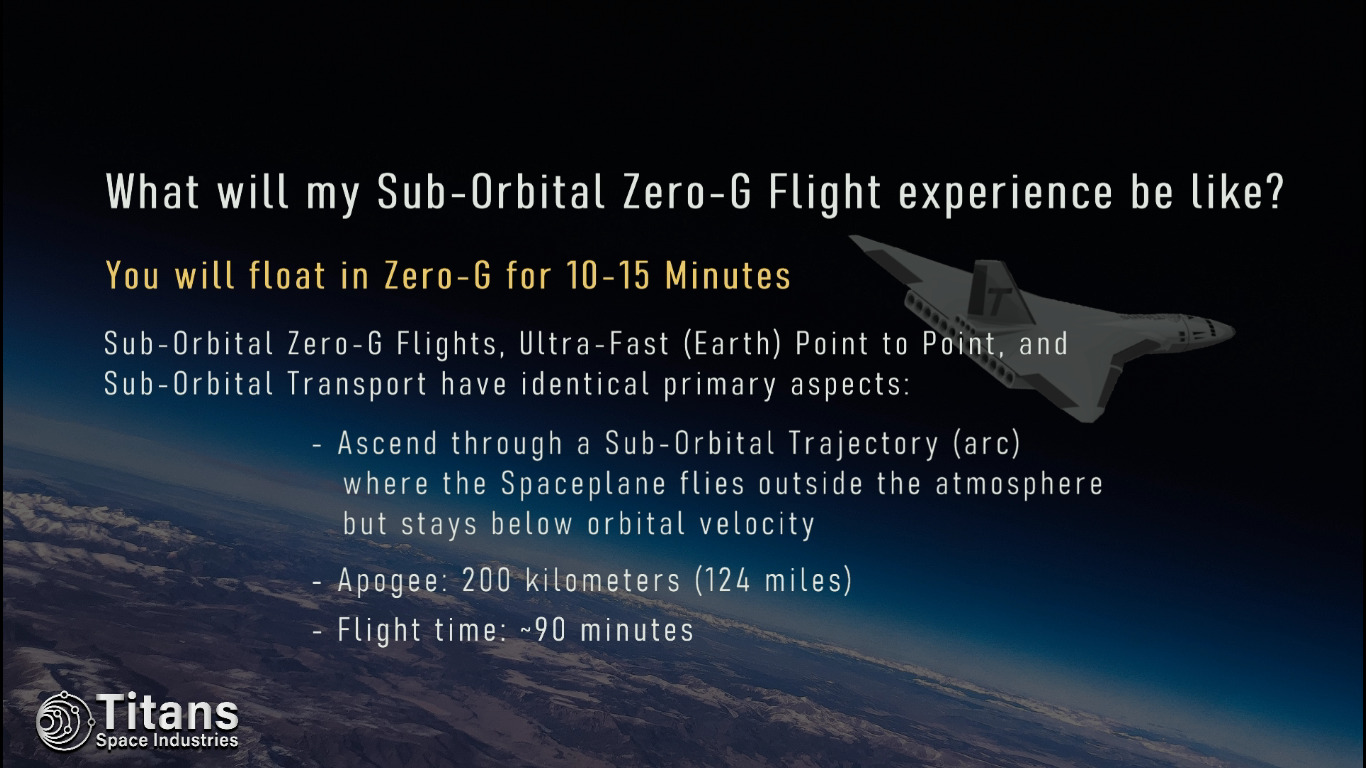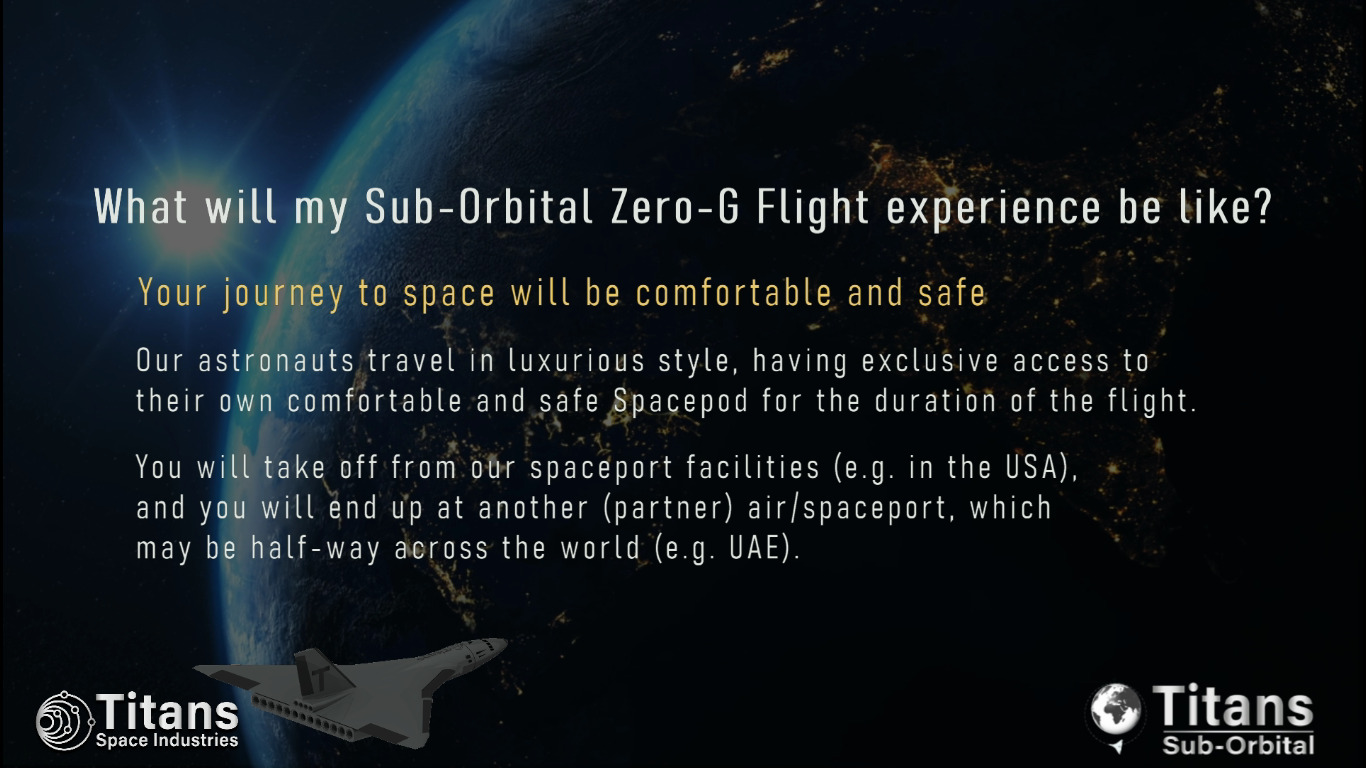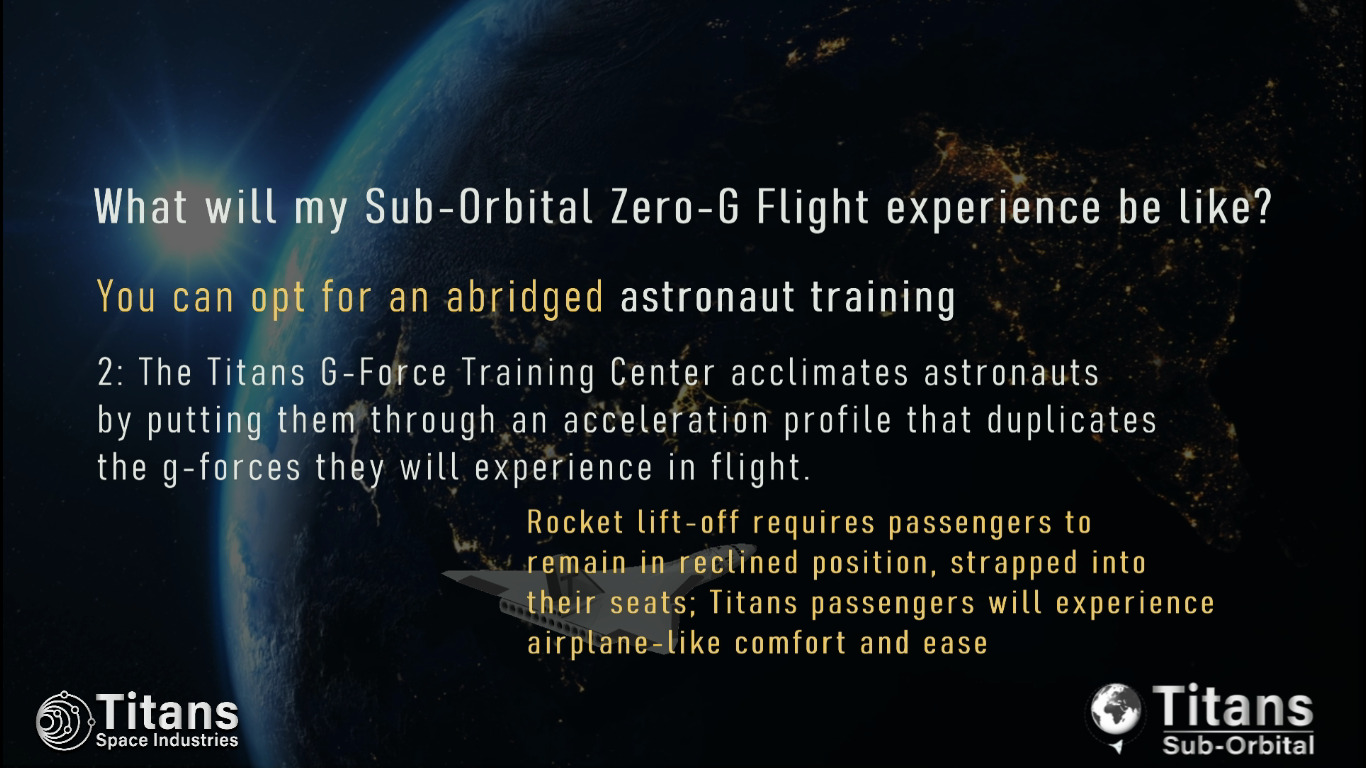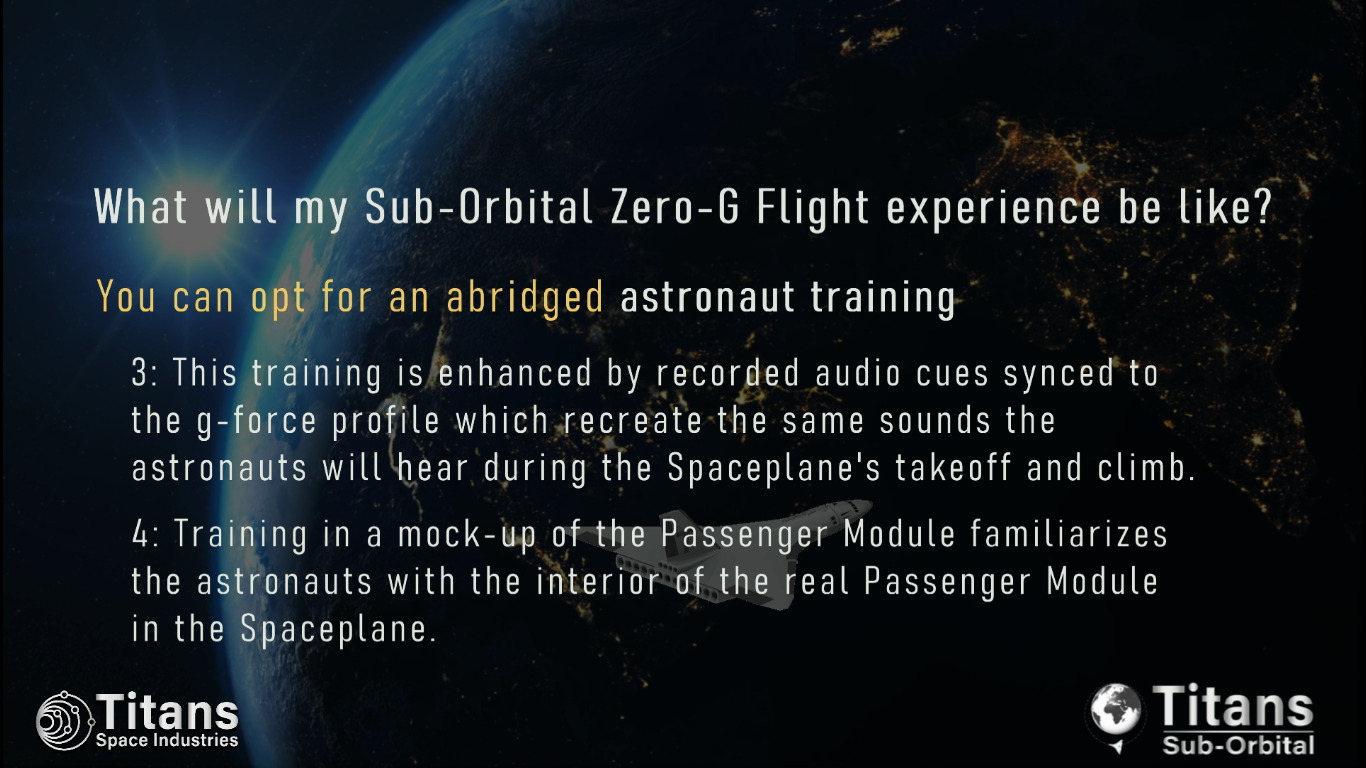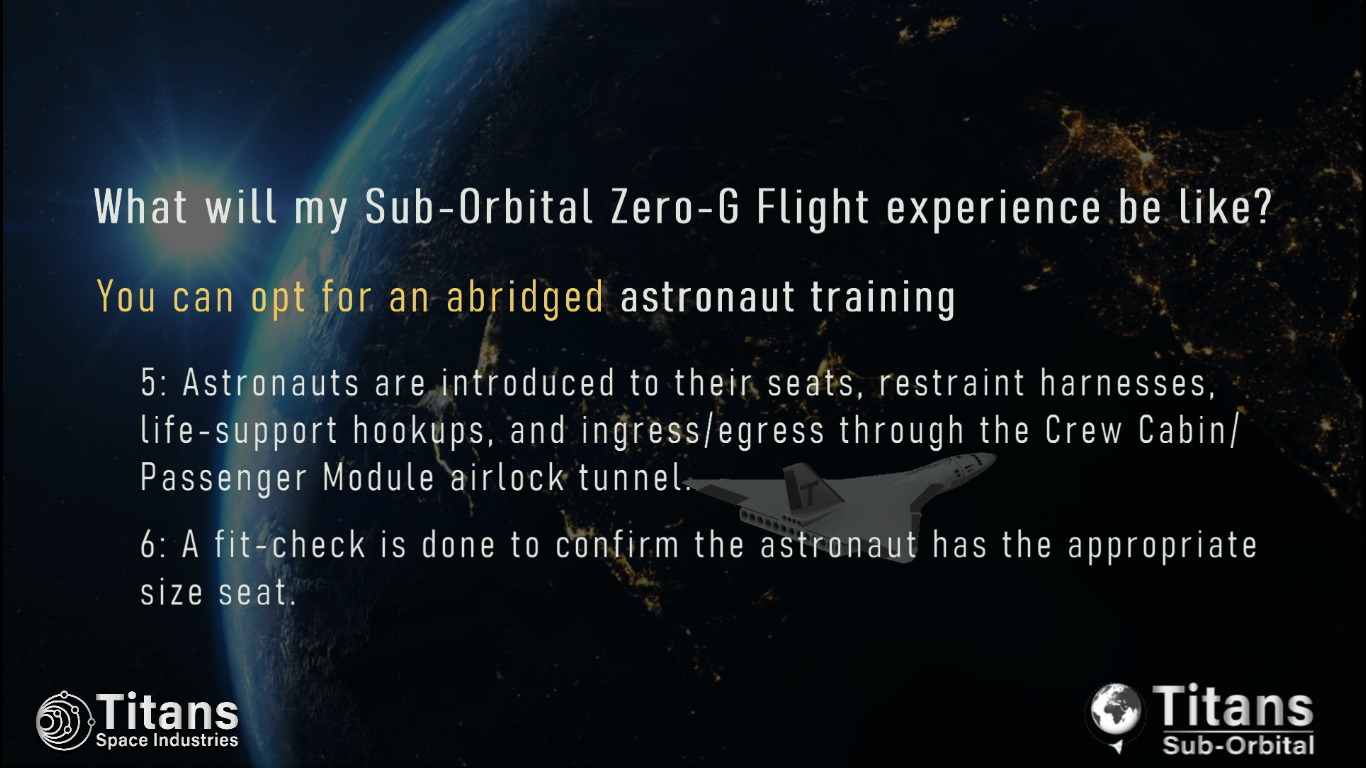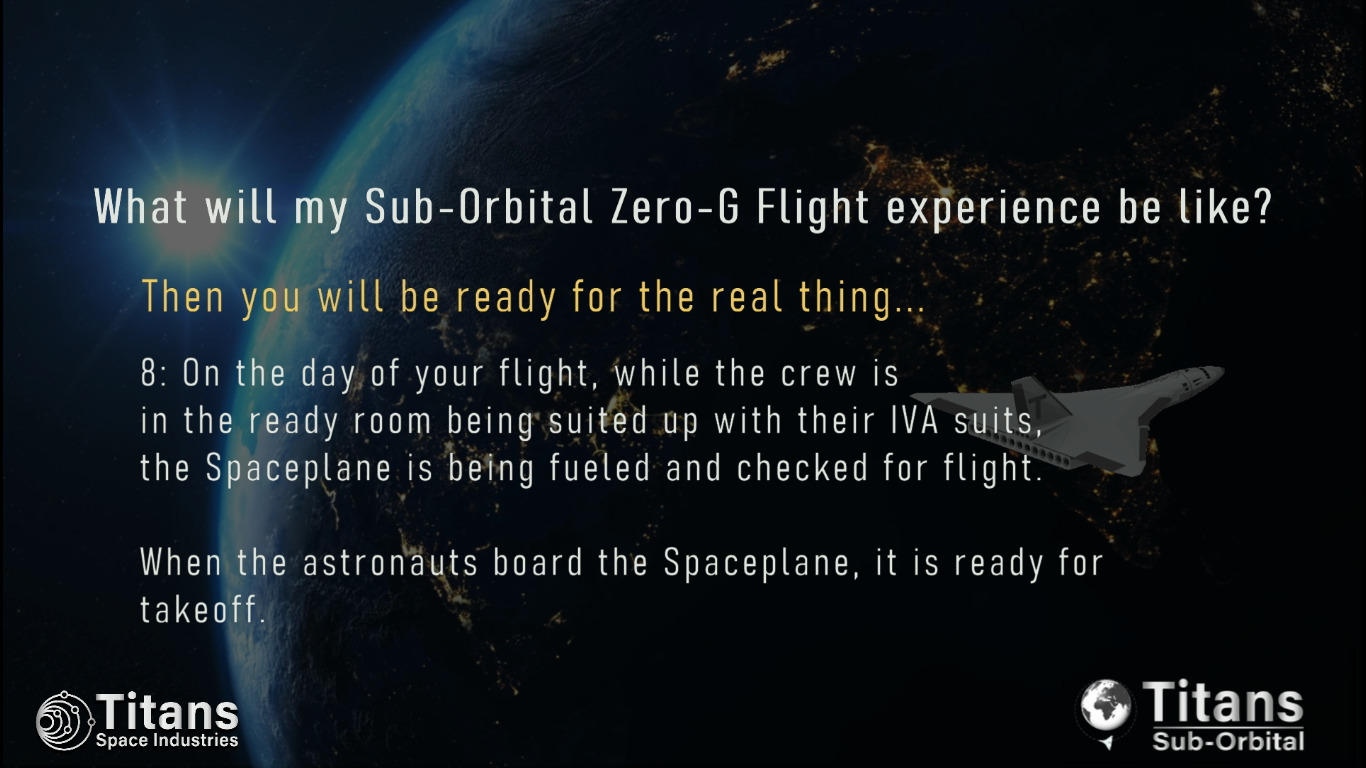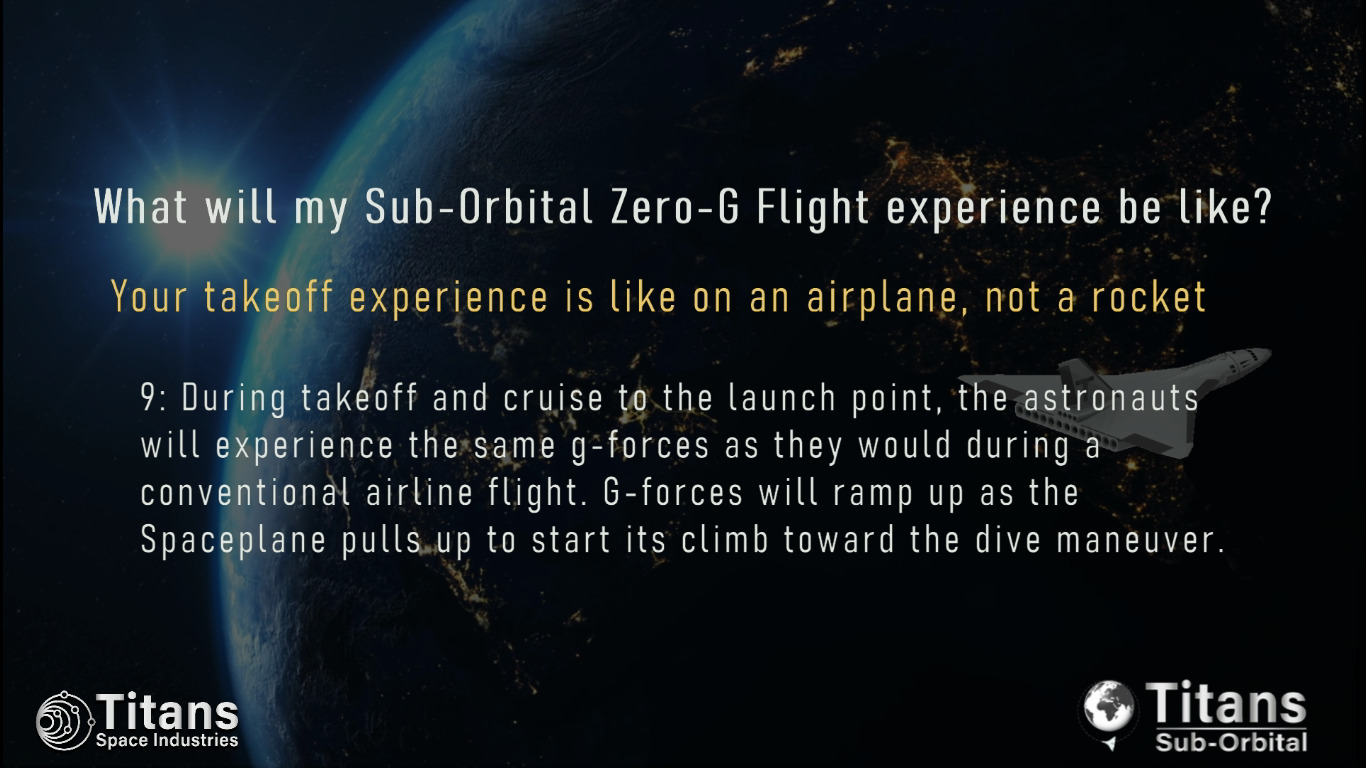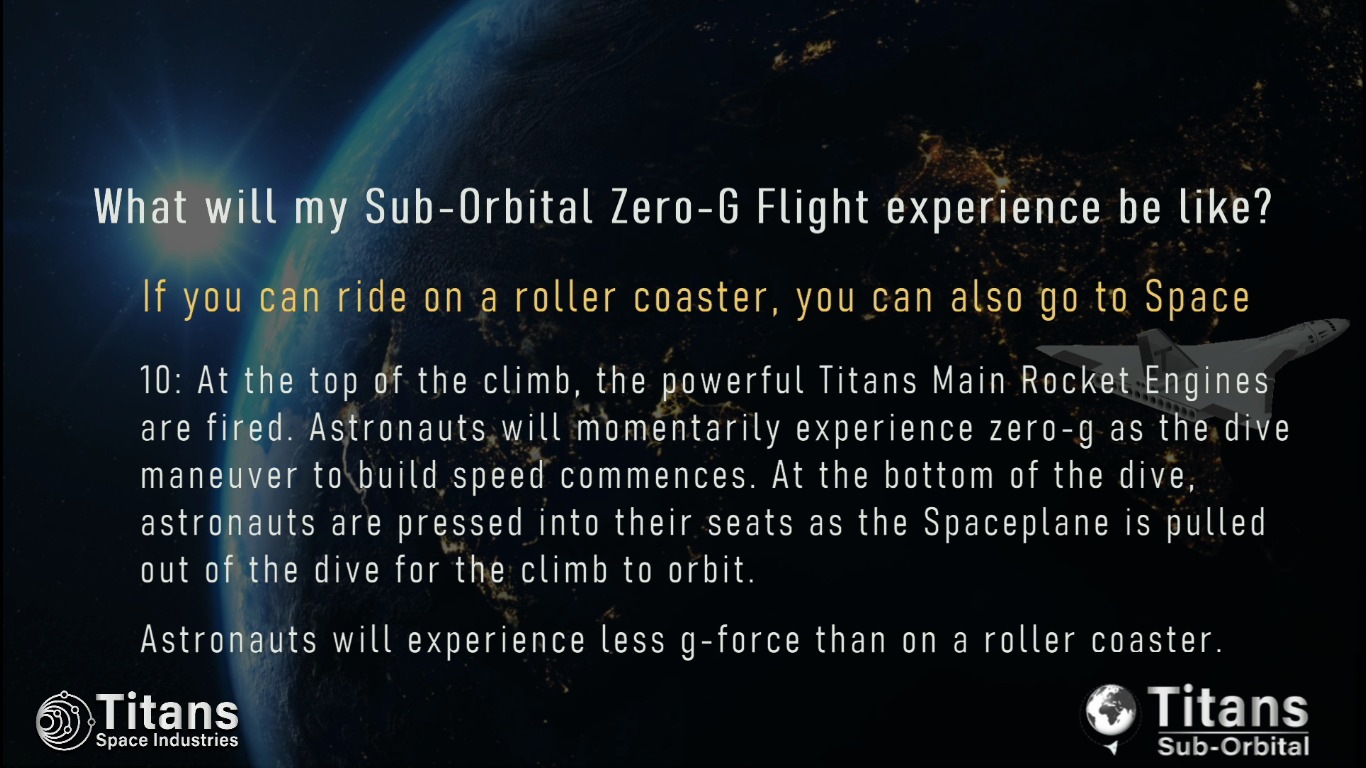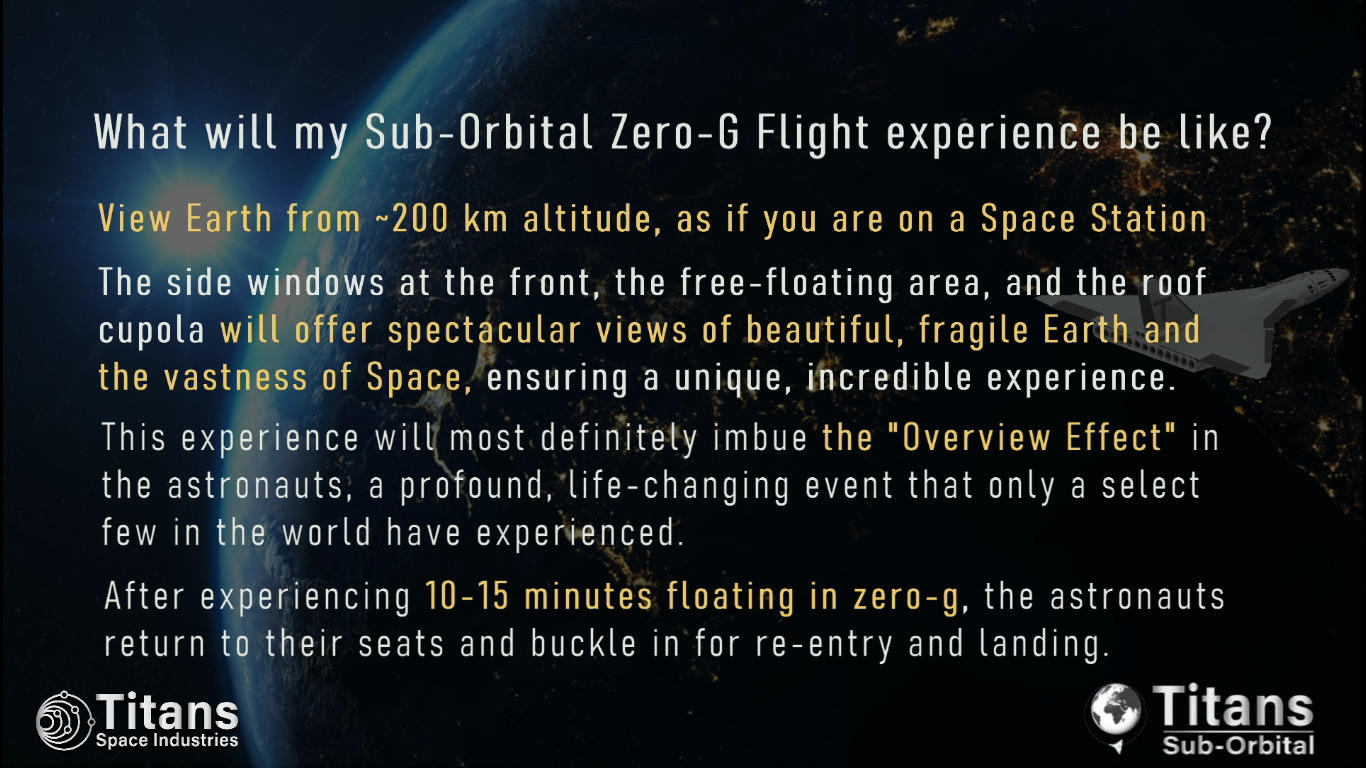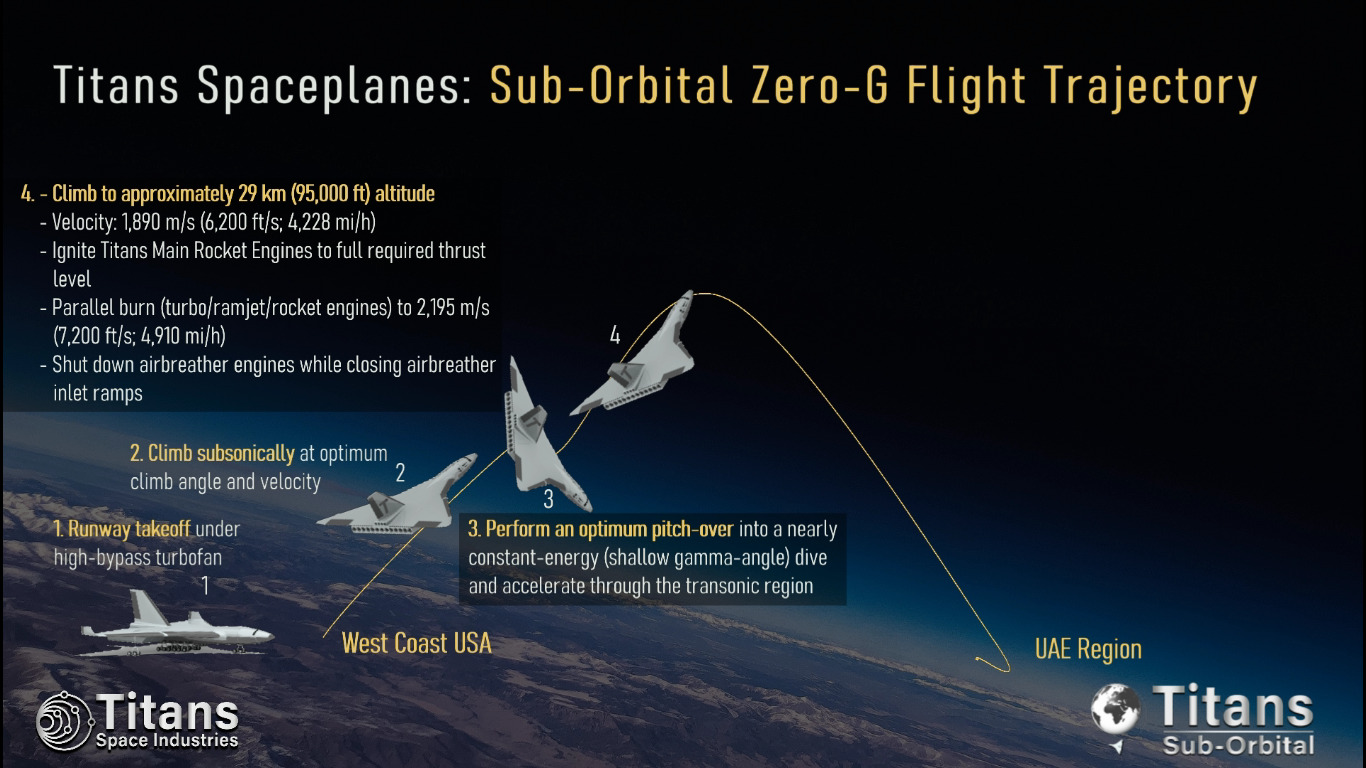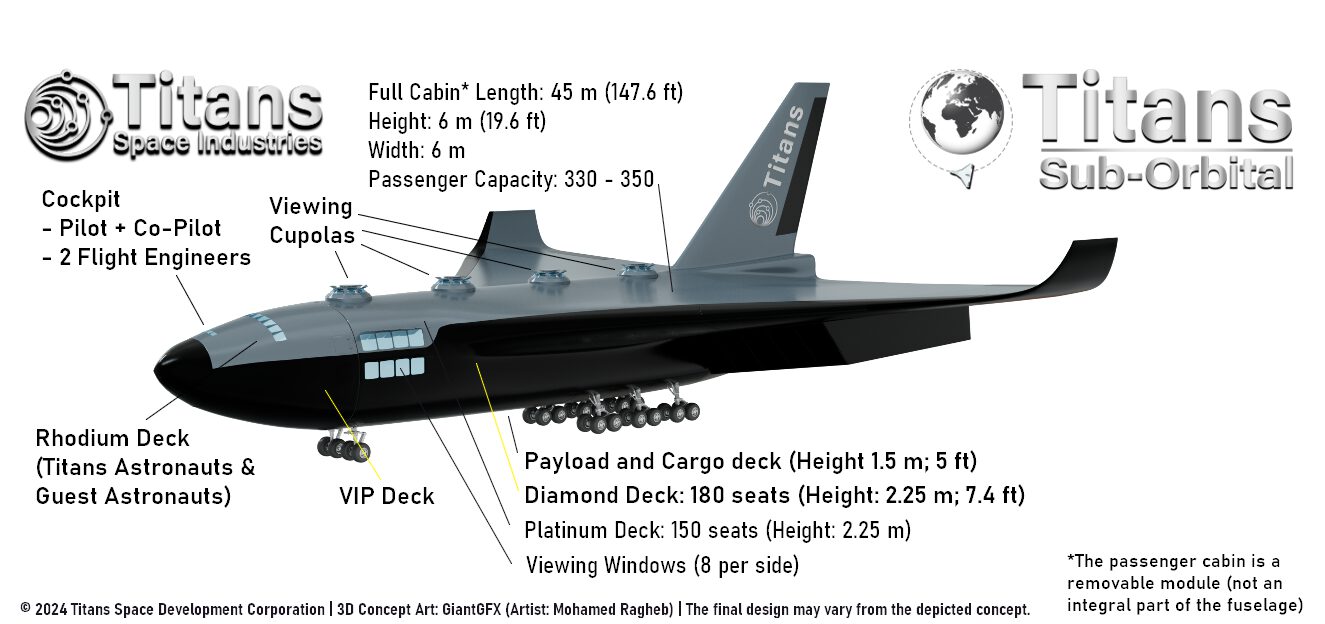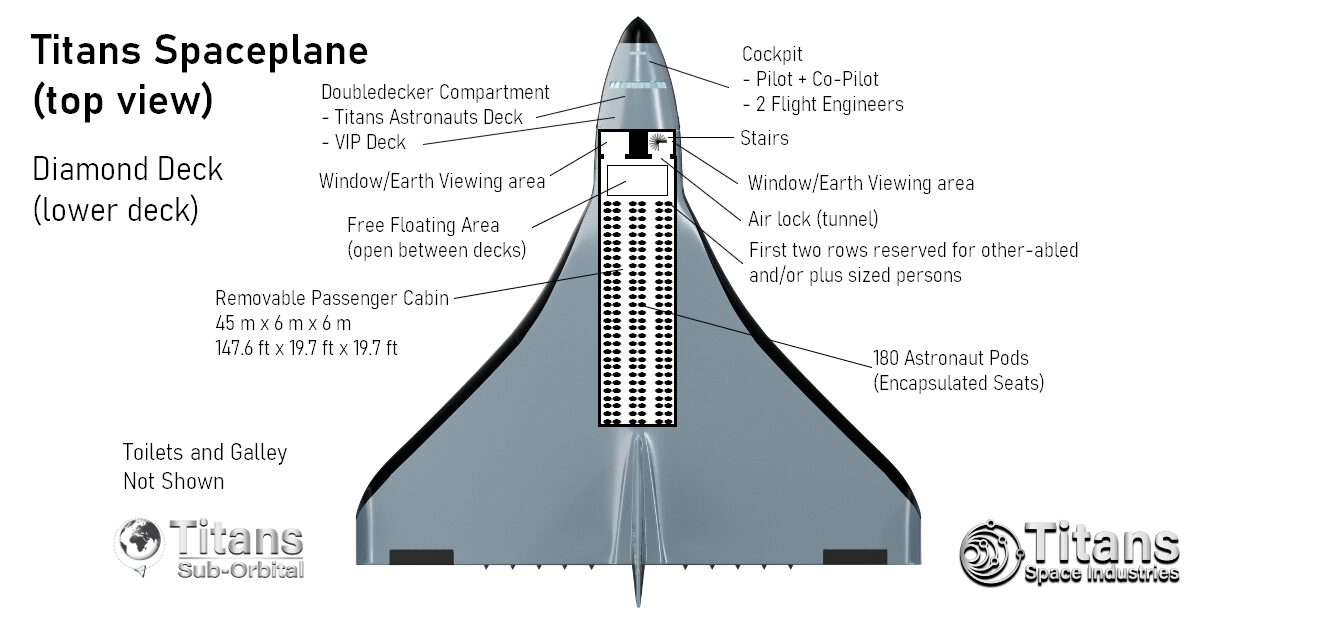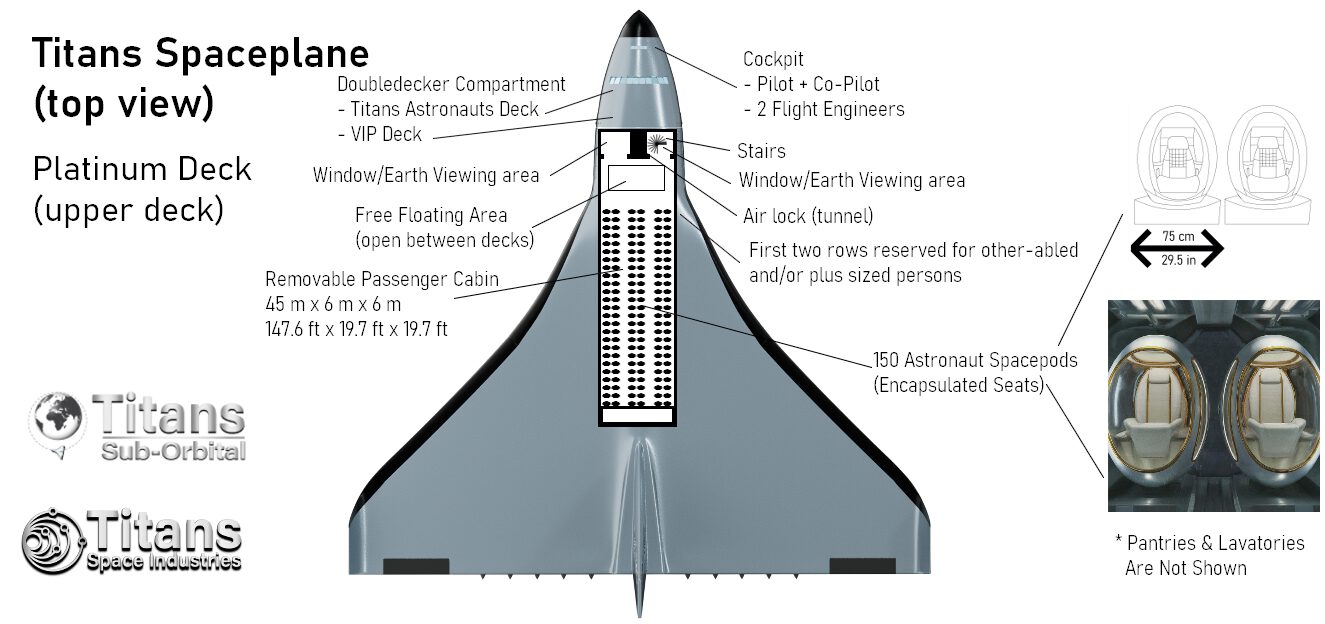Parts of this page are being updated!
Information, videos, and sliders on this page are being updated. Please check back after April 7, 2025.
Sub-Orbital Zero-G Flights
From $149K | Inside a Spaceplane
Become an Astronaut
View Earth from 200 km
Duration: ~90 minutes
Float Zero-G: 10-15 mins
View a Large Part of the World
Perks include Stock Options
Despite the media hype surrounding rockets like SpaceX’s Starship, routine space transportation, including human space travel, by means of rockets will not reach large numbers, basically due to the inherent risks and limitations of such vehicles.
For large scale space travel and space cargo transport to reach efficiency and safety levels like air travel/air cargo, the vehicles we use must operate like airplanes.
Titans Spaceplanes are the holy grail of aerospace; they are designed as a revolutionary space transportation system that eliminates the need for expensive launch facilities, vehicle assembly buildings, and (expendable or reusable) all-rocket boosters.
A Titans Spaceplane can operate from any (partnered) large airport, and it can carry up to 330 astronauts into any 555 km (300 nmi; 344 mi) orbit; it uses multi-cycle airbreather propulsion to reach the top of the troposphere and then ignites its rocket engines to reach Low-Earth Orbit.
Sub-Orbital Zero-G Flights | Space Tourism
Sub-Orbital Zero-G Flights will be operated by Titans Sub-Orbital (TSO), a spin off company from Titans Space Industries. TSO’s main objective is to make space tourism and space travel affordable for the general public, with prices starting at just $149,000.
3Sub-Orbital Zero-G Flights are the best way to view much of the world in ~90 minutes. You will experience 10-15 minutes in zero-g weightless mode.
Sub-Orbital Zero-G Flights will be available from 2031 onward, as soon as the Titans Spaceplanes become operational.
The full experience for one person starts at $149,000. Tickers are not available as of yet.
Sub-Orbital Zero-G Flights | Point to Point | Faster than Hypersonic Travel
Titans Spaceplanes are capable of ultra-fast point to point (P2P) travel on Earth, able to land at any partner airports in the world within 90 minutes. No other form of transportation can compete with this speed.
P2P travel for the public will be available from 2032 onward on more than five popular routes and will cost between US$100K to $149K for a one-way ticket.
The Sub-Orbital P2P experience will be somewhat similar to the Sub-Orbital Zero-G Flight space tourism experience. As such, P2P flights between 2029 and 2032 will be handled as space tourism or space transport.
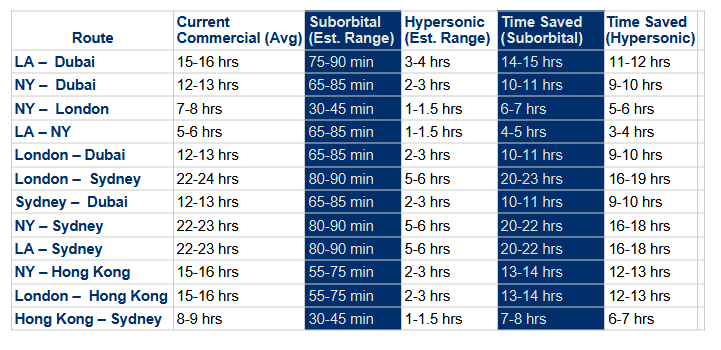
Sub-Orbital Zero-G Flights | Specs
✓ Sub-Orbital Trajectory: Ascent through a suborbital ballistic arc where the vehicle flies outside the thick part of Earth’s atmosphere but stays below orbital velocity
✓ Apogee (highest altitude reached from Earth): 200 km (124 miles)
✓ Flight time: Less than 90 minutes to any location
✓ Capacity: 15-330 Astronauts
✓ Cargo capacity: 90-100 Tons
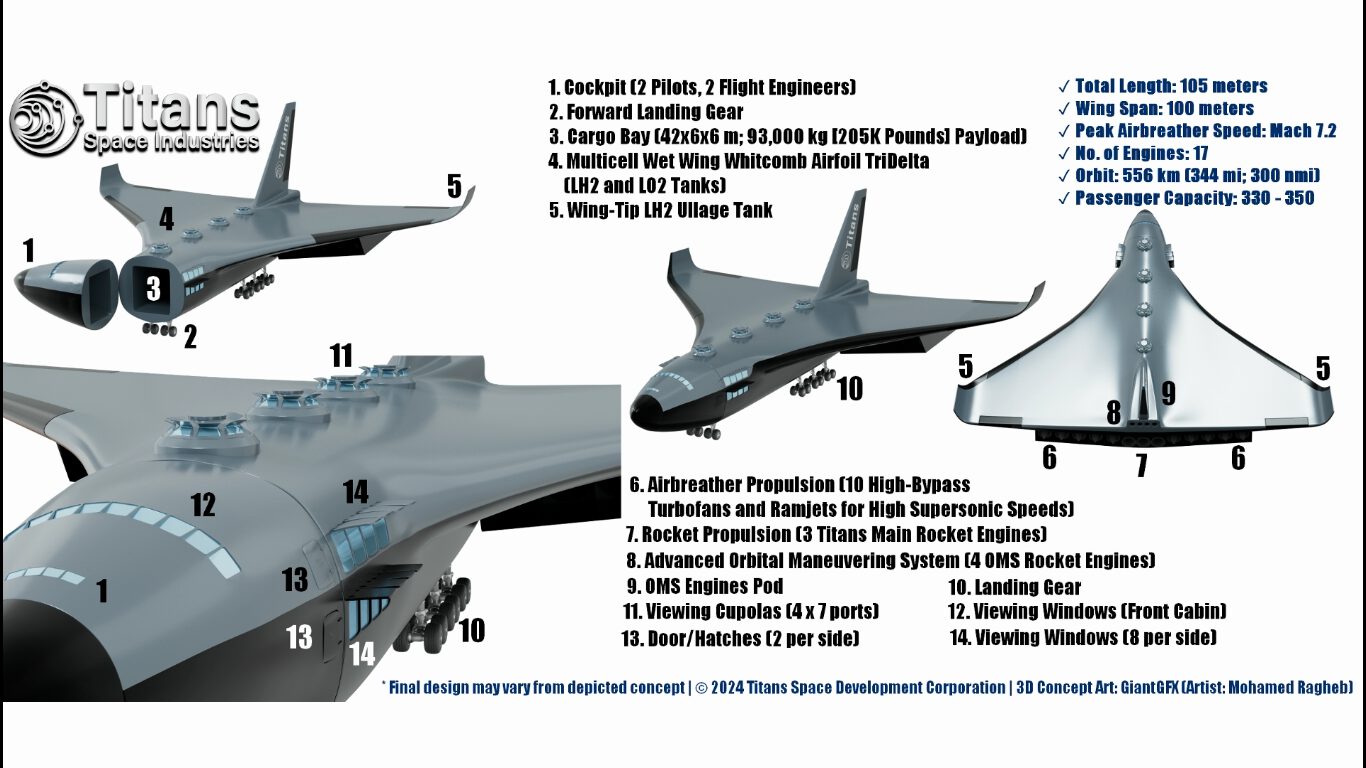
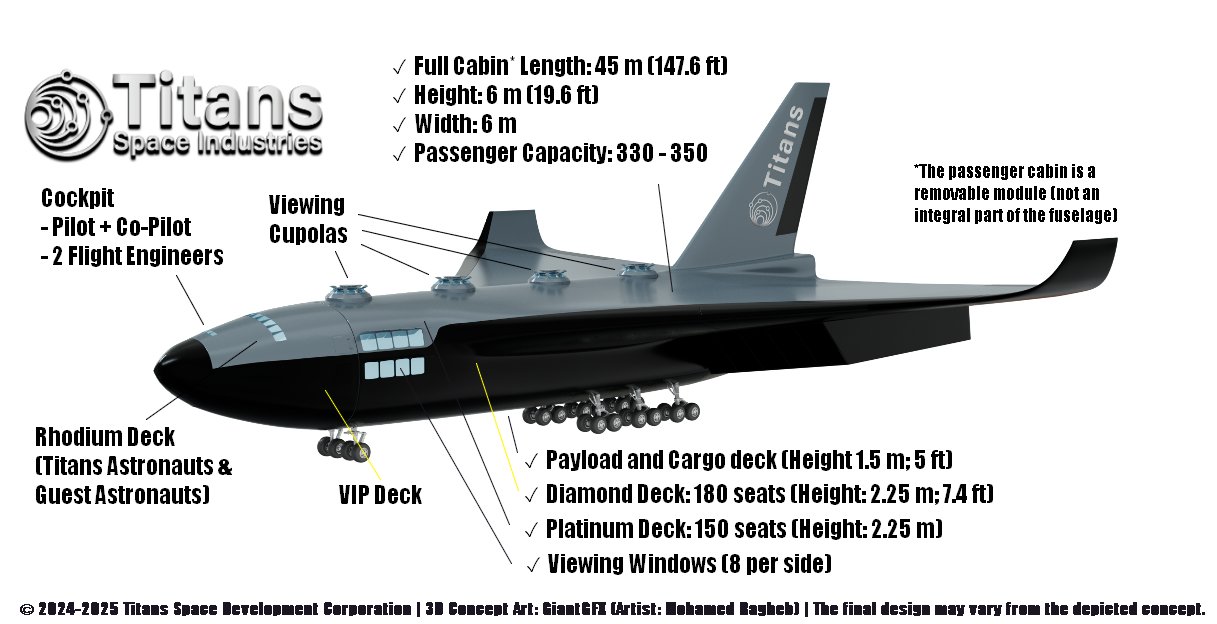
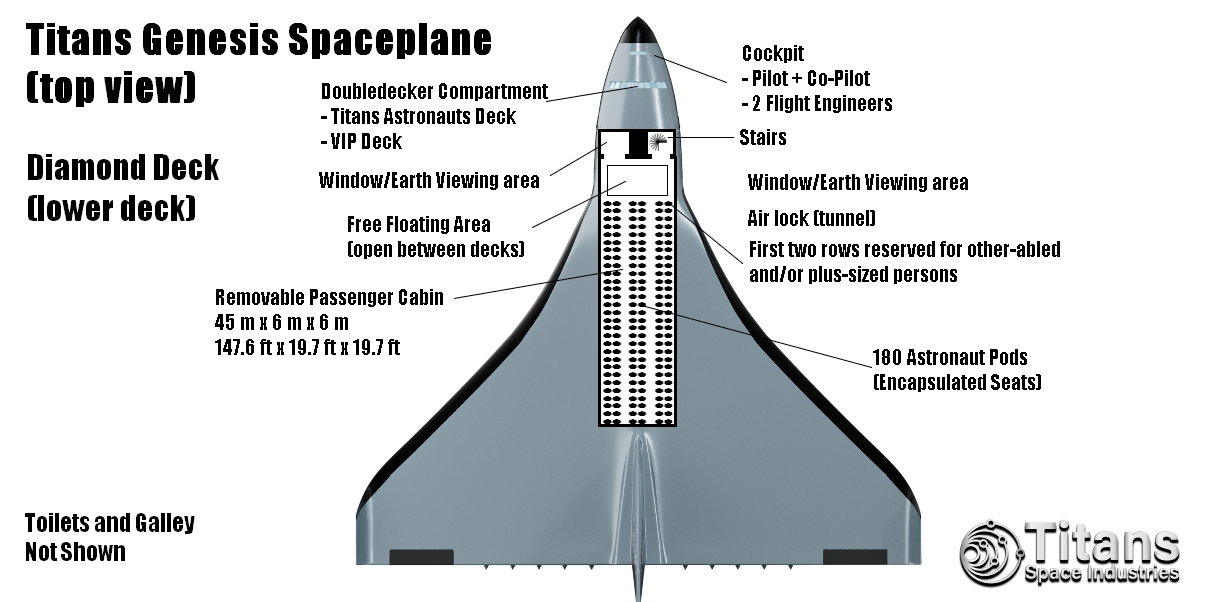

Lorem ipsum dolor sit amet, consectetur adipiscing elit. Ut elit tellus, luctus nec ullamcorper mattis, pulvinar dapibus leo.
